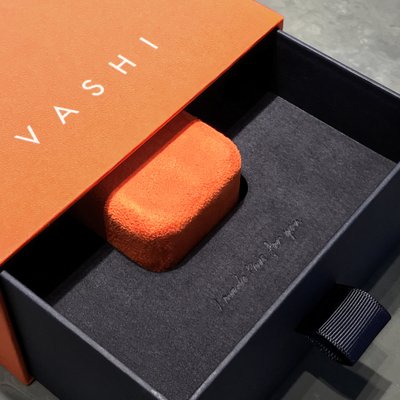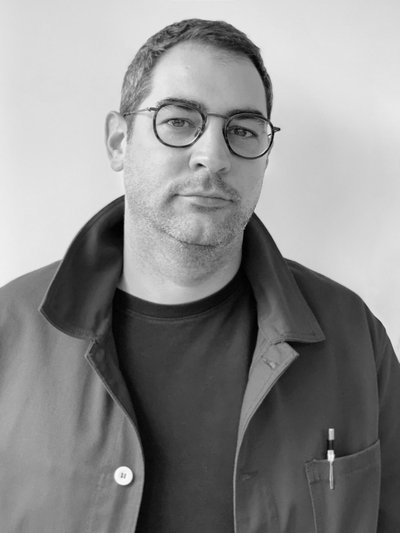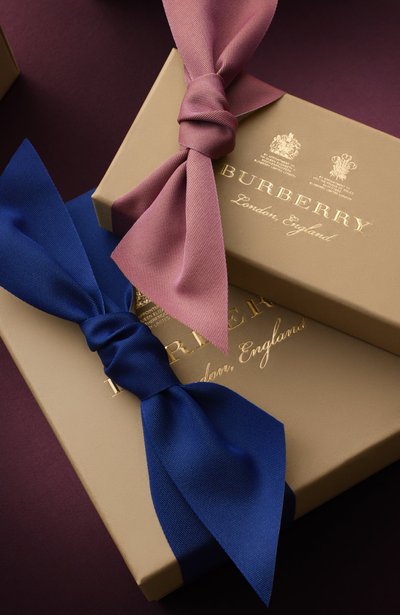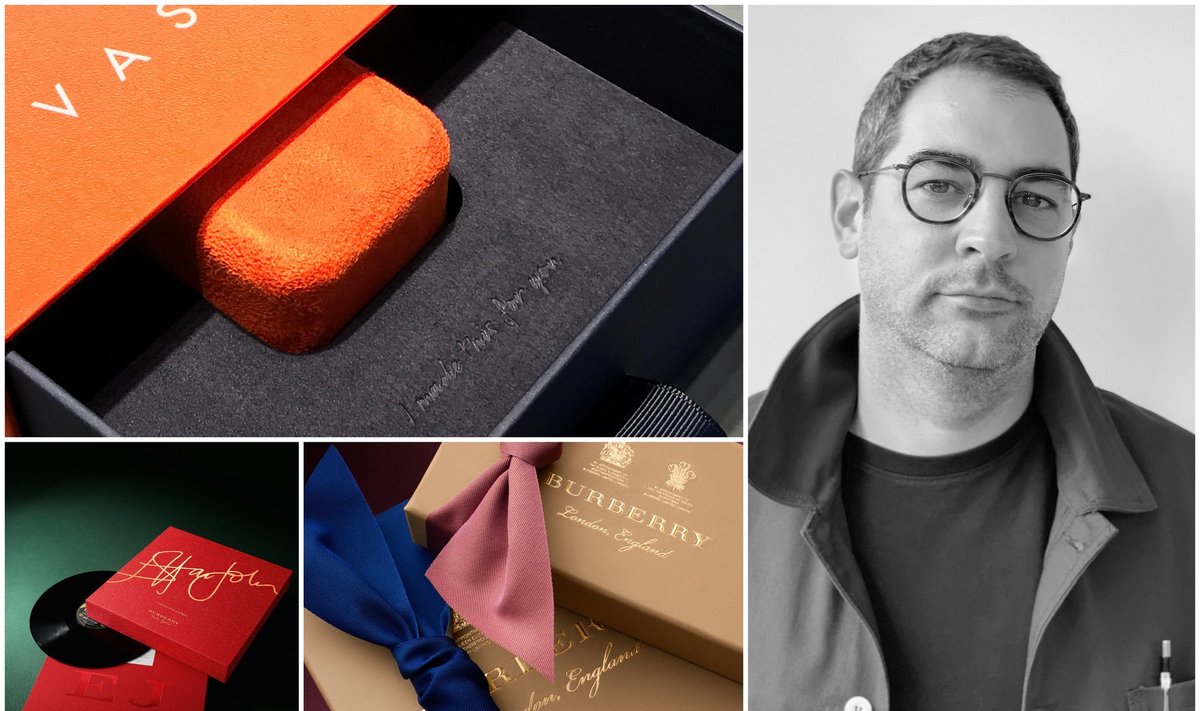Born in France V. Villeger now lives in London where he creates impressive and high-quality packaging for famous and luxury brands. The designer stresses that those brands have to lead in the world by being sustainable and socially responsible.
- What is your main inspiration for creativity?
- When we talk about inspiration it is important to remember the difference between what I do, which is design, and somebody who do arts. The first thing I look at when I need to design something is the brand that I am working for. If I am designing a perfume for a certain brand first thing I would look at is the history of this brand, what does this brand want to tell, what are the story.
My primary concern is to make sure that what I design works for the brand. However, it is not necessarily an expression of my inner creativity.
It is very important that the sources of inspiration would be unrefined. It is very easy to look at Google or Pinterest and you have lots of images there but these images have already been through another artist’s or designer's brains. So images have already been processed. My advice for younger designers is always to look beyond Pinterest.
I like to look at antiques, vintage pieces. I am not obsessed with reinventing the wheel. Every time I do a design I like to understand the context and to know what people have done in the past. In my studio, for instance, I have a whole glass cabinet with things that I buy on eBay or in antique stores. They are not really expensive or precious but I get a lot of inspiration from common objects from the past. Sometimes they can look really ugly and can come from anywhere. In my cabinet, I have a piece of metal that I found interesting that I had found on the pavement.
- How would you describe luxury packaging?
- It has evolved over the years. A few years ago it was about using incredible materials. You would have wood, a bit of gold and that meant it was luxury. Over a few years, we have seen a democratization of those techniques.
It becomes easier and more affordable to use such techniques as gold foiing. It means that now you can have a supermarket chocolate brand and have beautiful packaging that a few years ago would have been exclusive and luxury packaging.

Luxury branding had to re-address what packaging means for them. Now it is a lot more about confidence. So if you look at luxury packaging now it says a lot less. It tends to be less busy. If you think about a bar of chocolate or a shampoo in a market you have to stand out because there are 50 other products.
However, in the luxury world, it is more about conveying the values of the brand. It is also about taking the consumer on the journey.
Luxury consumption is really about pleasure. Therefore, you want to make sure that packaging contributes to your experience. For instance, you spend a lot of money on a scarf and you want to know that your pleasure from that scarf starts the moment you open the box.
I think for me luxury is about having a point of view as well. Increasingly people want to know what you stand for and that is really important as well.
- What would you name as the best example of luxury packaging?
- For me, the measure of good packaging is how well people remember it and if it can become iconic. The Coca Cola bottle is always an example (even it is not from the luxury world) how packaging can become really memorable.
The luxury equivalent for Coca Cola bottle would be Chanel No.5 bottle. What always amazed me with this bottle is how it is always better in people’s minds than reality. So it is always useful to understand the power of the packaging.
- People are more and more focused on sustainability and the environment. How does that change trends in luxury packaging?
- A lot of people assume that luxury is exempt from the sustainability matters and luxury brands do not care. In my experience that is not true.
When I was at Burberry we spent a lot of time, effort and money on developing materials that were better from a sustainability perspective.
We redesigned packaging in a way that we removed some processes like plastic lamination that made recycling easier. We also made sure that our products are made from sustainable materials, for example, we are not using paper ar wood from rainforests.
I believe that a luxury brand has to be a leader and it is its job to show the way we are heading forward. So for me, it is a responsibility to be sustainable. Consumers are becoming very smart about that and they can call out any brand if they do not agree with what a brand does.

Also, it is a great opportunity from a creativity point to make a statement. We are very lucky as designers that now we have materials that are much better from a sustainability point of view. We have sustainable materials that now looks just as good as their virgin counterparts.
20 years ago if you wanted to use recycled paper it had to be brown or grey with a lot of dots in it because it was not great quality. So using it was a creative statement. Whereas now you could use entirely recycled paper and it would look just as good as new. It means that from the creative statement it becomes more of the statement of your values.
- In the world of technology, people often say that the principle of simplicity makes your product work. How about simplicity in the luxury packaging industry?
- I would tend to agree that simplicity is trendy here as well. It links to couple of things. One is confidence. In the luxury packaging world, it is about having the courage to stay quiet rather than feel that you have to explain everything on your packaging.
Also, it does go back to sustainability point where every piece of packaging now has to give you a feeling that it deserves to be here.
I am all in favor of simplicity. I think designing something that looks very simple is actually very hard. Simpler it looks probably it was harder to develop and design. For me, it is not negative but a real challenge.
- According to you how much of success of a product comes to packaging?
- I think it is very important. It also depends on the category. If you take, for example, fragrance, it is really hard to sell it online because it is not a visual thing. You are selling a scent. So the job of packaging here is to express what that scent will do. That visual representation of the scent is very important in the success of a product.
You are not going to make a bad product successful with a good packaging but you might make a good product fail with a bad packaging.

- Do you see how technologies will change luxury packaging in the future?
- There are a lot of innovations and technologies in the packaging world now. At the moment we are at the stage where people are trying to find out how to apply it. There are a lot of applications but they do not add much value for a consumer yet. You have barcodes you can scan with your phone and get more information. That is great from brands’ point of view but actually, consumers are not that hungry for that information.
For me packaging is a three-dimensional product, it is a physical thing and lots of the time. The packaging is a break from a digital world that we live in. It is something you can interact with and it does not have a screen. I think that is why people love it. In my work, I focus more on this than on layers of technology.
- You were born and raised in France but lived in the United Kingdom for many years. Do you see a difference between the level of creativity people have in these countries?
- You can see a difference but it depends on government support. If tomorrow Lithuanian government decided that creativity was as important as math in schools you would see soon Lithuania to becoming a very creative country.
France and Great Britain are both very creative countries but also in a different way. The first degree in design I did in Paris and the second one in England. What did strike me was the difference in approach. I think from my French background I have that notion of aesthetic and elegance whereas from the UK I got more notion how things will work and designing something that I gonna be efficient.
